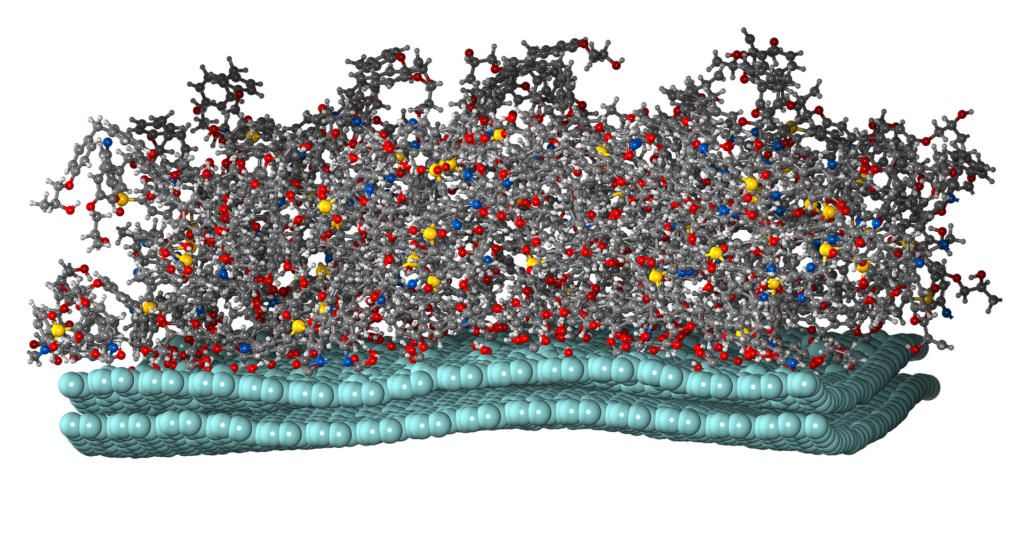Coatings are a class of products of great economic importance with a multitude of properties over a large time and length scale. Often one or more of the components of the coatings are polymers. Today most engineered products are coated to be protected from usage and working environments. Their performance is based on physical and chemical interactions between the coating and the substrate. Formulating coatings usually involves the knowledge of the key features of the components of a coating and a trade-off made among these properties. All these facts make multiscale simulations an ideal tool to address property prediction for this class of material. In this webinar we will have two guest speakers from the National Institute of Standards (NIST): Dr. Fred Phelan and Dr. Lilian Johnson, presenting their work entitled: Coarse-grain models of polymer melts: Tools and methods for preserving structure and dynamics.
Anyone interested in coatings, polymers, and/or multiscale simulations will benefit from this free webinar and Q&A session. We will be pleased to have you with us!
The examples presented will demonstrate how to translate a real-life problem into a simulation workflow applied on the digital twin of the product of interest. In particular:
- Design water repellent coatings
- Optimize corrosion inhibition
- Design ‘smart’ coatings
Abstract of the presentation of Drs. Phelan and Johnson:
Coarse-grain models of polymer melts: Tools and methods for preserving structure and dynamics.
Polymer dynamics are set by a hierarchy of length scales, making it computationally expensive to model polymeric systems with the detail of an all-atom (AA) molecular model to sufficiently long times in simulation. In coarse-grained (CG) models, many atoms are lumped into larger units to eliminate “fast” degrees of freedom whose size scales are small to enable simulation of larger systems at longer timescales and improve computational costs. The efficacy of CG models ultimately depends the ability to retain essential features of the molecular system of interest. Here, we study a CG simulation model that aims to preserve both chemical specificity (typical of systematic CG methods) and dynamics (typical of phenomenological CG models) of a polymer melt. The model is parameterized in two steps. First, we generate the conservative part of the force-field using the iterative Boltzmann inversion (IBI) method to preserve the chemical specificity of the AA structure. Second, we recover the dynamics by introducing a Langevin thermostat, and thus a tunable friction coefficient, that we parameterize to correct for the sped-up dynamics of the IBI-generated force-field.
The talk will be divided into two parts. In the first part, we discuss a new software code that we have recently developed which automates the development of coarse-grained potentials using the Iterative Boltzmann Inversion (IBI) method. Two major problems make automation difficult: 1) noisy distributions derived from sampling; 2) low sampling regions which introduce discontinuities in the sampling. Our code addresses these problems using an approach which combines data smoothing, fitting to functional expansions, and extrapolation schemes to handle low sampling regions without discontinuity or data distortion. The code is built on a series of reusable Python modules which are designed to enable data handling and data interoperability for applications involving multiscale molecular dynamics data. In the second part, we discuss parametrization of CG models using the Langevin thermostat. We recently showed that we can recover AA dynamics by parameterizing the friction coefficient of the CG representation and compared the parameterization across various measures of translational and rotational motion [J. Chem. Phys. 154, 084114 (2021)]. Here, we test the parameterization of the dynamics compared to those targeted to recover a material property, the zero-shear viscosity. We show that the viscosity-based friction is consistent with the other measures and that viscosity (and by inference other material properties) may be more simply predicted by using the dynamics-based friction measures. Examples will be presented for a number of oligomeric melt systems including polystyrene and squalane.

Graphene based composite coating
Register to our webinar
